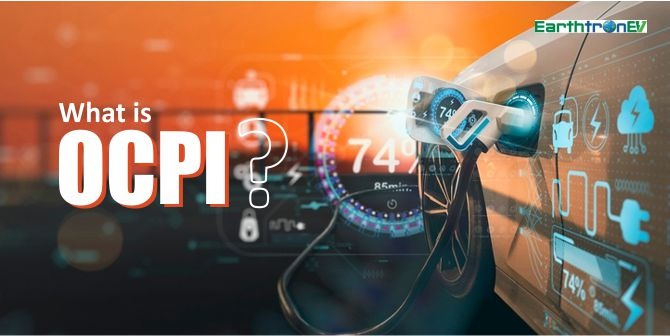In the technical world, with growing technology, the demand for EVs is getting higher. OCPI, OCPP, and OCSP are the most common acronyms for technological innovations. OCPI is short for Open Charge Point Interface.
But it often confuses the EV charger communication protocol Open Charge Point. OCPI, an open protocol, enables EV users to “automatic roaming.” It allows EV users to plug into various electric vehicle charging networks. This article will highlight what the Open Charge Point Interface means, its importance in the EV industry, and how it works.
What are Open Protocols?
A protocol is a set of procedures and rules certifying error-free, efficient, and fast communication and data exchange between different components in the electric vehicle industry. Using these protocols, one can set the proper authorization. It allows the smooth functioning of the electric vehicle charging. These EV tools ensure widespread interoperability between EV charging infrastructure stakeholders. These protocols ease the electric vehicle revolution.
What is OCPI or Open Charge Point Interface?
OCPI (Open Charge Point Interface) is an open, point-to-point protocol. Experts designed it for smooth communication between charge station operators and service providers. In simple terms, this protocol enables “automatic roaming” over different EV charging networks. It provides EV users with the flexibility, scalability, and accessibility of charging stations. It allows them to charge on any convenient network.
OCPI also facilitates roaming between charging networks. It allows electric vehicle operators to use many stations without requiring many accounts to log in. OCPI enables them to discover the best charging options that suit their choice and location. The protocol delivers accurate charge station information like location, pricing, and accessibility. Most, OCPI considers real-time billing and accessibility through mobile to EV charging stations.
What is Communication Protocol?
Like humans, every hardware and software needs a medium via which these can communicate and transfer data. Communication protocols are collections of instructions that help devices communicate. Without any incompatible mess, it allows the devices to work together to unravel the problems users meet. In other words, a communications protocol is like a set of instructions to translate data for communication. OCPI is one such example of a communication protocol.
It helps to pair the Charge Point Operator and eMobility Service Providers and vice versa. It supports easy and efficient automated roaming for EV users between distinct EV charging networks.
What does OCPI do?
The electric vehicle is a complex landscape and is getting more complicated with the increase in the demand for EV resolution. The EV charging infrastructure comprises various components like EMSPs, CPOs, and DSOs. But many charging infrastructure owners and their competitors share the same goal.
It is to make the network easier to access by general EV users and charge the electric cars at home, at work, or in public. The solution comes with OCPI.
It enables charging infrastructure get accessible to every EV user on different networks. It is a roaming protocol that allows end-users to use electric vehicle chargers operated by one CPO. Even when users use a charging application built by a separate CPO or EMSP, they can operate any network.
How does it work?
The EVRoaming Foundation publishes and manages the OCPI protocol. OCPI function as a protocol. It provides a standardized set of rules and guidelines, enabling many EV charging software systems. This allows interaction with each other through APIs. APIs are protocols, tools, and principles that systematize how various hardware and software apps interact.
The OCPI protocol also permits direct connections between many connectors through two or more OCPI hubs. In simple phrases, Open Charge Point Interface helps different components of the EV infrastructure involved in the communication to “speak the same language.” It enables a more convenient electric vehicle charging experience for EV users.
Further, Open Charge Point Interface allows free data exchange. These include tokens, tariffs, locations, and sessions between distinct networks and parties. OCPI delivers error-free communication. It gives EV users a real-time understanding of the accessibility, availability, and unavailability of different charging points.
The EV software systems use OCPI. Regardless of the class or brand of charging station or service provider, it provides seamless communication between different connectors. It guarantees that EV users can operate different charging stations from myriad providers. Despite their location, they can still enjoy a full-time invariant and user-oriented experience.
Benefits of Open Charge Point Interface for EV Charging Infrastructures
OCPI is essential in the EV industry for seamless and efficient communication between the connectors and the service providers. The following are some benefits of OCPI in electric vehicle charging infrastructure:
1. Easy to install:
One of the significant advantages of OCPI is its flawless implementation. Since APIs determine the working of the OCPI, many software industries use these and are well-known in the tech world. Any software engineer can work with OCPI anytime without special instruction or training. It reduces the barriers to entry of new parties in the electric vehicle charging industry. It encourages competition and boosts the EV resolution, which helps to drive down costs for electric vehicle users.
2. Scalability:
EV professionals Joury de Reuver and Franc Buve designed OCPI for scalability and flexibility. It allows adapting to the development and expansion of the EV charging industry. It indicates OCPI protocol is adjustable to new business models, technologies, and market demands. This ensures that it remains applicable and practical in the coming decades.
3. Payment Processing:
Charging station infrastructure meets several problems. These can be payment systems, charging management, and others. Thus, many Charging Management Systems (CMS) seek to increase the efficiency of charger uptime and energy consumption. The payment systems of EV charging stations can differ between states and countries. It makes the system challenging to provide consistent payment processing and interoperability between many networks.
The solution comes with OCPI. It provides a common language that helps in better communication. This allows Charging Management Systems to connect with various payment mechanisms and service providers.
4. Interoperability:
Since OCPI provides a common communication language for many networks and service providers. It thus improves communication and interoperability. It boosts the charging process by making the infrastructure accessible to EV users. Thus, it promotes the growth of more extensive and convenient charging networks.
5. International Standards:
OCPI is an international standard. It is well-known and recognized by several governments, and organizations all over the globe. It proves that OCPI provides a common framework for EV charging infrastructures. It is convenient across various regions and facilitates consistency and interoperability.
Conclusion
The revolution of electric vehicles will soon exceed the demand in the market. Regardless of what others believe, it will influence electrification on roads. Many private companies and governments encourage youths to switch to EVs for convenience. It is because EVs are less prone to environmental damage and health problems. So far, Open Charge Point Interface (OCPI) protocol adds to the benefits of the EV revolution. And no doubt, it will ease consistency and interoperability for EV resolution.







